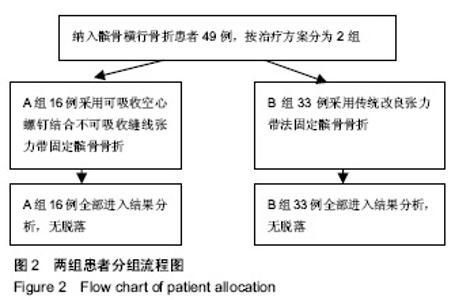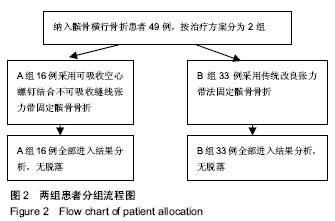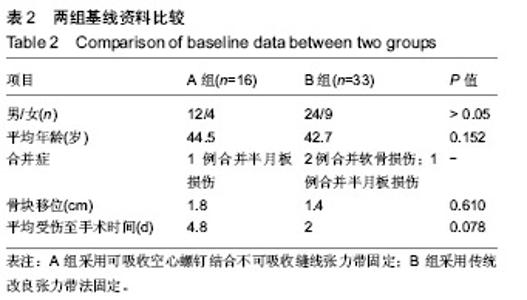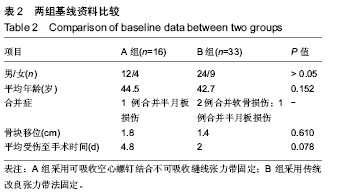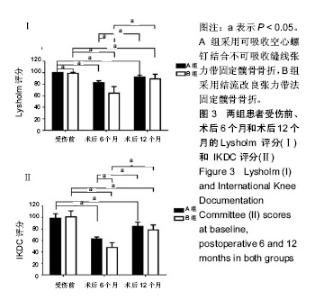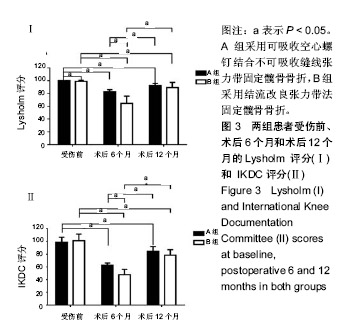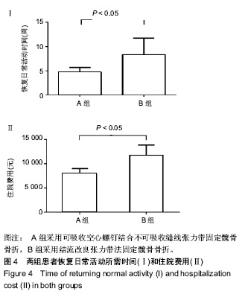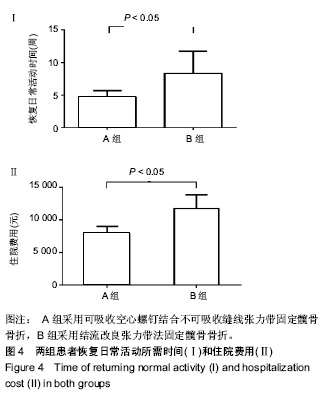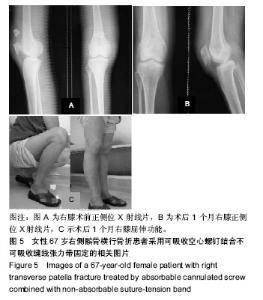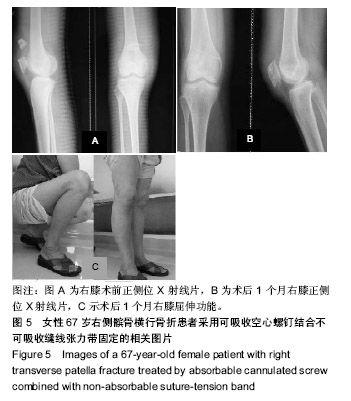| [1]Larsen P, Court-Brown CM, Vedel JO, et al. Incidence and epidemiology of patellar fractures. Orthopedics. 2016;39: e1154-e1158. [2]Cerciello S, Cote M, Lustig S, et al. Arthroscopically assisted fixation is a reliable option for patellar fractures: A literature review. Orthop Traumatol Surg Res. 2017;103:1087-1091. [3]Gwinner C, Märdian S, Schwabe P, et al. Current concepts review: Fractures of the patella. GMS Interdiscip Plast Reconstr Surg DGPW. 2016;5:Doc01.[4]Kakazu R, Archdeacon MT. Surgical management of patellar fractures. Orthop Clin North Am. 2016;47:77-83. [5]George DA, Dosani A, Morgan-Jones R. Patellar reconstruction following previous patellectomy: a review of the literature and a case series using distal femoral autograft during total knee arthroplasty. Ann R Coll Surg Engl. 2017;99:e97-e101. [6]Zderic I, Stoffel K, Sommer C, et al. Biomechanical evaluation of the tension band wiring principle. A comparison between two different techniques for transverse patella fracture fixation. Injury. 2017;48: 1749-1757.[7]Tian QX, Hai Y, Du XR, et al. Comparison of Tension-Band Wiring With the Cable Pin System in Patella Fractures: A Randomized Prospective Study. J Orthop Trauma.2015;29:e459-463. [8]Melvin JS, Mehta S. Patellar fractures in adults. J Am Acad Orthop Surg. 2011;19:198-207.[9]Baruah RK. Modified Ilizarov in difficult Fracture of the Patella. A case report. J Orthop Case Rep. 2106;6:26-28. [10]Miles DT, Graves ML, Spitler CA, et al. Failure of Patellar Plating with Mini-Fragment Implants: A Case Report. JBJS Case Connect. 2017;7:e13. [11]Carpenter JE, Kasman R, Matthews LS. Fractures of the patella. Instr Course Lect. 1994;43:97-108.[12]Berg EE. Open reduction internal fixation of displaced transverse patella fractures with figure-eight wiring through parallel cannulated compression screws. J Orthop Trauma. 1997;11:573-576.[13]Qi L, Chang C, Xin T, et al. Double fixation of displaced patella fractures using bioabsorbable cannulated lag screws and braided polyester suture tension bands. Injury. 2011;42:1116-1120. [14]Hsu KL, Chang WL, Yang CY, et al. Factors affecting the outcomes of modified tension band wiring techniques in transverse patellar fractures. Injury. 2017;48:2800-2806. [15]Hoshino CM, Tran W, Tiberi JV, et al. Complications following tension-band fixation of patellar fractures with cannulated screws compared with Kirschner wires. J Bone Joint Surg Am. 2013;95: 653-659.[16]Huang SL, Xue JL, Gao ZQ, et al. Management of patellar fracture with titanium cable cerclage. Medicine (Baltimore). 2017;96:e8525. [17]Böstman O, Kiviluoto O, Santavirta S, et al. Fractures of the patella treated by operation. Arch Orthop Trauma Surg. 1983;102:78-81. [18]Smith ST, Cramer KE, Karges DE, et al. Early complications in the operative treatment of patella fractures. J Orthop Trauma. 1997;11: 183-187.[19]Wang CX, Tan L, Qi BC, et al. A retrospective comparison of the modified tension band technique and the parallel titanium cannulated lag screw technique in transverse patella fracture. Chin J Traumatol. 2014;17:208-213.[20]Tian Y, Zhou F, Ji H, et al. Cannulated screw and cable are superior to modified tension band in the treatment of transverse patella fractures. Clin Orthop Relat Res. 2011;469:3429-3435. [21]Dargel J, Gick S, Mader K, et al. Biomechanical comparison of tension band- and interfragmentary screw fixation with a new implant in transverse patella fractures. Injury. 2010;41:156-160. [22]Sayum Filho J, Lenza M, Teixeira de Carvalho R, et al. Interventions for treating fractures of the patella in adults. Cochrane Database Syst Rev. 2015;69:CD009651. [23]Wild M, Eichler C, Thelen S, et al. Fixed-angle plate osteosynthesis of the patella - an alternative to tension wiring? Clin Biomech (Bristol, Avon). 2010;25:341-347. [24]Yang X, Wu Q, Lai CH, et al. Management of displaced inferior patellar pole fractures with modified tension band technique combined with cable cerclage using Cable Grip System. Injury. 2017;48:2348-2353. [25]Kyung MG, Lee SH, Kim MB. Complications Related to Implant Fixation of Patellar Fractures: Comparison of Ring Pins versus Bent K-Wires. J Knee Surg. 2017;30:560-564. [26]Camarda L, La Gattuta A, Butera M, et al. FiberWire tension band for patellar fractures. J Orthop Traumatol. 2016;17:75-80.[27]Petrie J, Sassoon A, Langford J. Complications of patellar fracture repair: treatment and results. J Knee Surg. 2013;26:309-312. [28]Lin T, Liu J, Xiao B, et al. Comparison of the outcomes of cannulated screws vs. modified tension band wiring fixation techniques in the management of mildly displaced patellar fractures. BMC Musculoskelet Disord. 2015;16:282. [29]Malik M, Halwai MA. Open reduction and internal fixation of patellar fractures with tension band wiring through cannulated screws. J Knee Surg. 2014;27:377-382. [30]Tandogan RN, Demirors H, Tuncay CI, et al. Arthroscopic-assisted percutaneous screw fixation of select patellar fractures. Arthroscopy. 2002;18:156-162. |
